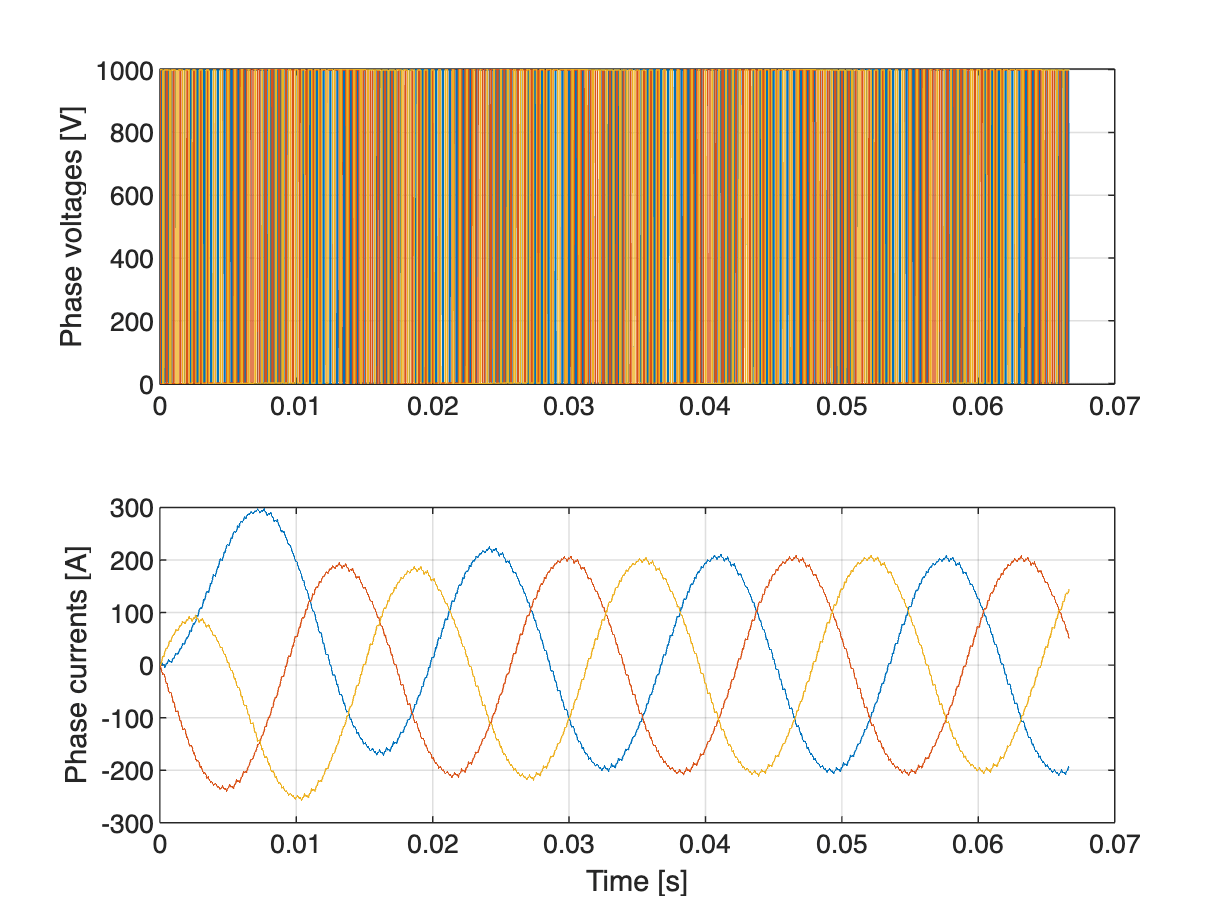Heatsink
Libraries:
Simscape /
Electrical /
Passive /
Thermal
Description
The Heatsink block models a heatsink that dissipates heat from power semiconductors. The heat from the case conducts through the fins and dissipates to the ambient temperature through convection. The environment and the working fluid are the same
You can parameterize this block from a datasheet, from tabulated heat transfer properties,
or from geometry that assumes an empirical convection correlation. If you set the
Convection parameter to Forced - specify flow
speed, the v input port specifies the flow
speed.
Parameterization: Datasheet
To parameterize the Heatsink block from a datasheet, set the
Parameterization parameter to
Datasheet and specify both the Vector of
temperature rises above ambient, T and Corresponding heat
dissipated to ambient, Q_TLU1(T) parameters.
If you enable forced convection in the system by setting Convection to
Forced - specify flow speed, specify both the
Vector of temperature rises above ambient, T and
Corresponding heat dissipated to ambient, Q_TLU2(T,v)
parameters.
Parameterization: Tabulated Convection and Fin Efficiency
To parameterize the Heatsink block based on the convection
coefficient as a function of the coolant flow speed and temperature difference with
the ambient temperature and the fin efficiency as a function of the convective
coefficient, set the Parameterization parameter to
Tabulated convection and fin efficiency.
The block uses this equation to calculate the dissipated heat:
where:
h(vfluid,ΔT)is the convective heat transfer coefficient tabulated against the fluid flow speed (for forced convection) and the temperature rise above the ambient temperature.Atotalis the total heat exchange surface area.Eff(h)is the fin efficiency, in percent values, tabulated against different convective heat transfer coefficients. The fin efficiency is the actual heat dissipated by the fin divided by the heat it would dissipate if all its volume was at the case temperature. This value depends on fin geometry and fin thermal conductivity.
Parameterization: Assume Rectangular Parallel Fins
If you set the Parameterization parameter to
Assume rectangular parallel fins, the block uses this
equation to calculate the dissipated heat:
where:
is the Rayleigh number.
is the Reynolds number.
g = 9.81 m/s2is the acceleration of gravity.βis the coefficient of volume thermal expansion of the fluid.νis the fluid kinematic viscosity.αis the fluid thermal diffusivity.kfluidis the fluid thermal conductivity.His the fin height.dis the fin depth.tis the fin thickness.bis the gap between fins.
If one side of size t x d is welded in the base, this equation
calculates the total heat exchange area:
Then this equation computes the efficiency of a rectangular fin:
where k is the fin thermal
conductivity.
Examples
Ports
Input
Conserving
Parameters
References
[1] Churchill, Stuart W.; Chu, Humbert H.S. Correlating equations for laminar and turbulent free convection from a vertical plate. International Journal of Heat and Mass Transfer (November 1975): 1323-1329.
[2] Teertstra, P., Yovanovich, M.M., and Culham, J.R.. Analytical Forced Convection Modeling of Plate Fin Heat Sinks. Proceedings of 15th IEEE Semi-Therm Symposium (1999): pp. 34-41.
Extended Capabilities
Version History
Introduced in R2021b

